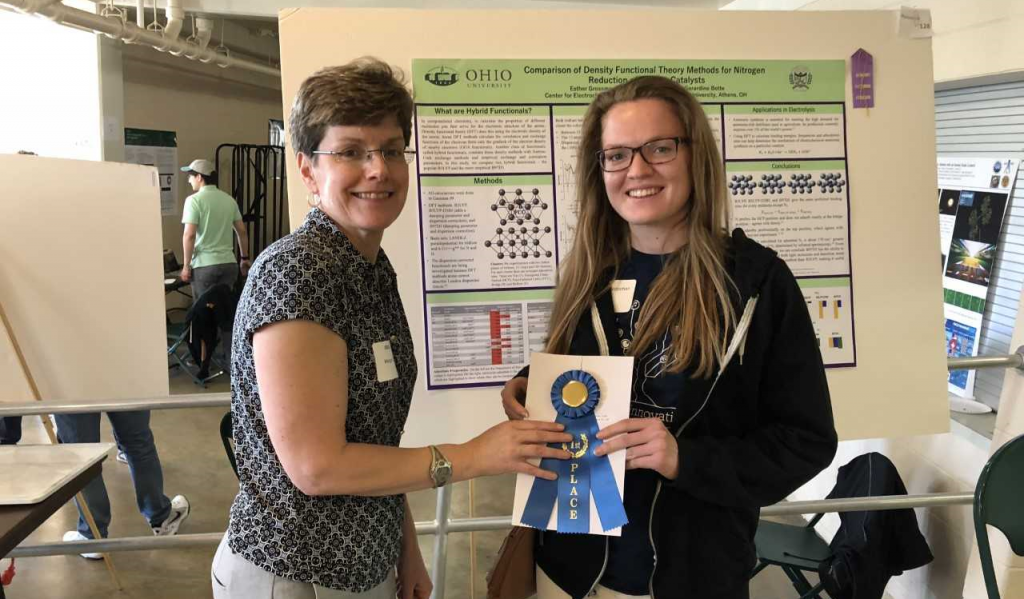
Environmental & Plant Biology professor Dr. Morgan Vis presents a blue ribbon to Esther Grossman at the 2018 OHIO Student Activity Expo.
By Amanda Biederman
NQPI editorial intern
Nanoscale and Quantum Phenomena Institute 2019 Spring Newsletter
Modeling a chemical process with computational software is no easy task, but HTC Engineering Physics student Esther Grossman isn’t afraid to take on the challenge.
Grossman is currently completing her honors thesis under the supervision of Distinguished Professor of Chemical and Biomolecular Engineering and Nanoscale and Quantum Phenomena Institute member Dr. Gerardine Botte, as well as Dr. Damilola Daramola from the Center for Electrochemical Engineering Research. The team is working to characterize the process of ammonia synthesis.
“I love the synergy between experimental work and theoretical work, especially in electrochemical engineering where processes (occur) in the lab; there’s just so many things involved,” Grossman said. “So it’s interesting (to see) how we can get computational accuracy … but there’s still so much that leaves you wondering when you simplify a system so much that you can do it on the computer.”
Ammonia is one of the most widely-used industrial compounds and is synthesized through a complex, multi-step procedure that is highly sensitive to external conditions. Many researchers are interested in finding alternative synthetic pathways to save energy costs.
Grossman uses a program called Gaussian to visualize clusters of atoms involved in ammonia synthesis. She is modeling the adsorption energies, bonding sites and site preferences that are involved in the synthesis process. For her thesis, Grossman compared different computational functions to account for the effect of mutual atomic interactions (represented by Van der Waals forces) within the molecular system.
“With these computational schemes, under the umbrella of density functional theory (a numerical technique used to model many-component systems), there’s no direct way to put a Van der Waals force into a numerical formula. It’s a very hard thing to model,” Grossman said. “So what we have is these functionals (approximations for the actual interactions among charged particles) that tack on a dispersive term to the whole function.”
Grossman applied three different density functionals to her system. Two of these functionals applied a dispersion effect, which helps mimic the effect of Van der Waals forces. She found that, when applied under the dispersive functionals, the bonding energies reflected more accurately those observed under experimental conditions.
Ultimately, Grossman said she hopes her work will be useful to other researchers who are studying ammonia synthesis. Next year, she plans to pursue her graduate degree in electrical engineering, where she hopes to apply her background in physics and computation to model electrical systems.
“Working with Dr. Botte was an awesome experience because she’s so knowledgeable,” Grossman said. “It was such a cool experience.”



















Comments